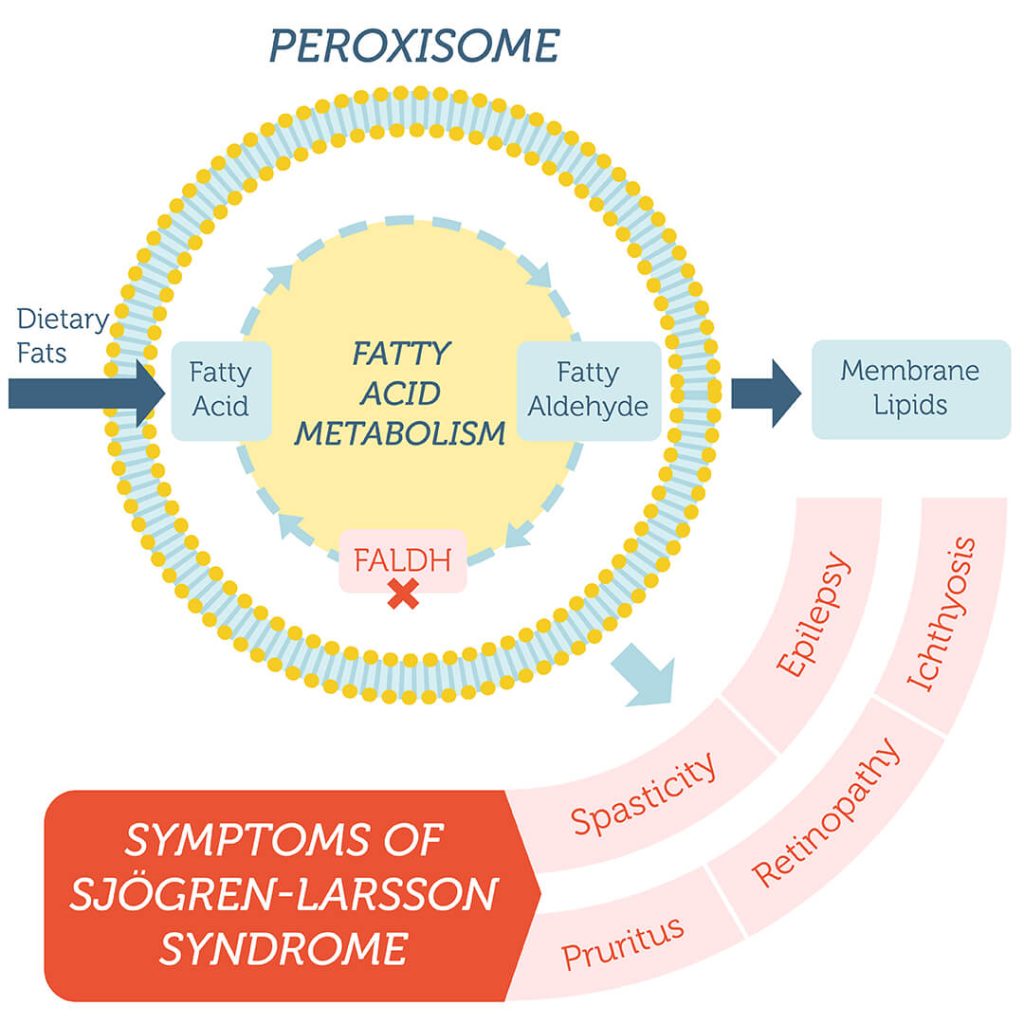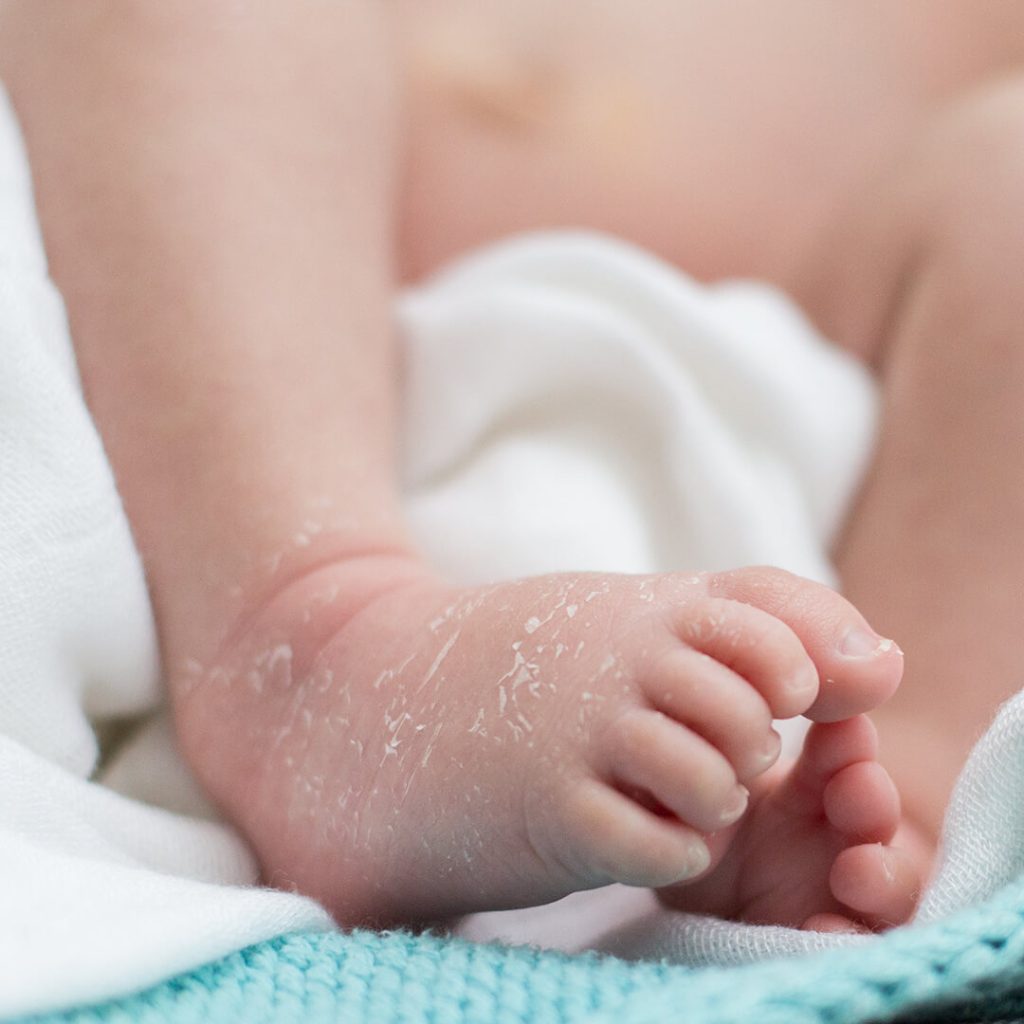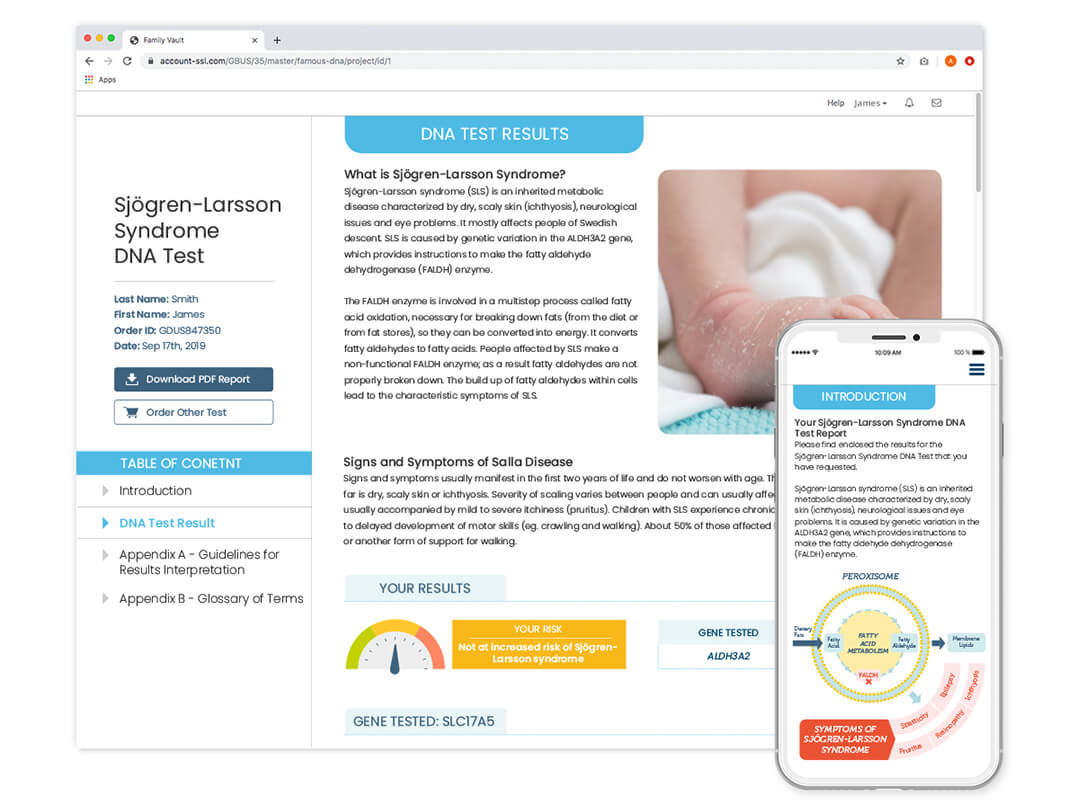Sjögren-Larsson Syndrome
Are you a genetic carrier for Sjögren-Larsson syndrome? Find out with this DNA Test.
- Detects the ALDH3A2 variant linked to Sjögren-Larsson syndrome
- Carrier screening test intended for couples who are planning to become pregnant
- Determine the risk of your child inheriting SLS
- 100% private and confidential online results
Already have DNA markers? Sign in and upload your data to view results.
Need to take the DNA Test? Order our easy-to-use swab kit.
Detailed Description
Sjögren-Larsson syndrome (SLS) is an inherited metabolic disease characterized by dry, scaly skin (ichthyosis), neurological issues and eye problems. It mostly affects people of Swedish descent. SLS is caused by genetic variation in the ALDH3A2 gene, which provides instructions to make the fatty aldehyde dehydrogenase (FALDH) enzyme.
The FALDH enzyme is involved in a multistep process called fatty acid oxidation, necessary for breaking down fats (from the diet or from fat stores), so they can be converted into energy. It converts fatty aldehydes to fatty acids. People affected by SLS make a non-functional FALDH enzyme; as a result fatty aldehydes are not properly broken down. The build up of fatty aldehydes within cells lead to the characteristic symptoms of SLS.
Take this test to find out whether you are a genetic carrier of ALDH3A2 variant and are at risk of passing it to your children. This is intended to be a carrier screening test for couples who are considering to start a family.

The Genetics
SLS is caused by genetic variation in the ALDH3A2 gene, which gives instructions to produce fatty aldehyde dehydrogenase (FALDH) enzyme. People with the variant produce a defective FALDH enzyme, leading to the build up of fatty aldehydes.
It is inherited in an autosomal recessive pattern, which means two defective copies of the ALDH3A2 gene must be inherited in order for the disease to manifest.

Variant Tested
This test looks at one variant of ALDH3A2 linked to Sjögren-Larsson Syndrome in people of Swedish descent.
- rs72547571 T (P315S)
Understanding your carrier status for these variants will help you understand the risk of passing it to your children.
While this test provides a risk analysis for a variant associated with for SLS, it may be necessary to perform complete gene sequence analyses, as additional variants are also linked to SLS.
Signs & Symptoms of Sjögren-Larsson Syndrome
Following signs and symptoms are usually seen in affected infants and children
- Dry, scaly skin (ichthyosis) –
- Chronic muscle stiffness and involuntary muscle spasms (spasticity) leads to delayed development of motor skills (e.g. crawling and walking)
- Intellectual disability varies from mild to profound
- Photophobia
- Approximately 40% of affected people have seizures
- Speech difficulty (dysarthria)
- Pruritis (itching)
- Tiny crystals in the light-sensitive tissue at back of the eye
How It Works
Step 1: Sign up for a free Genebase account.
Step 2: Upload your DNA markers to Genebase.
Step 3: Login to your account to access your results when they are ready.


